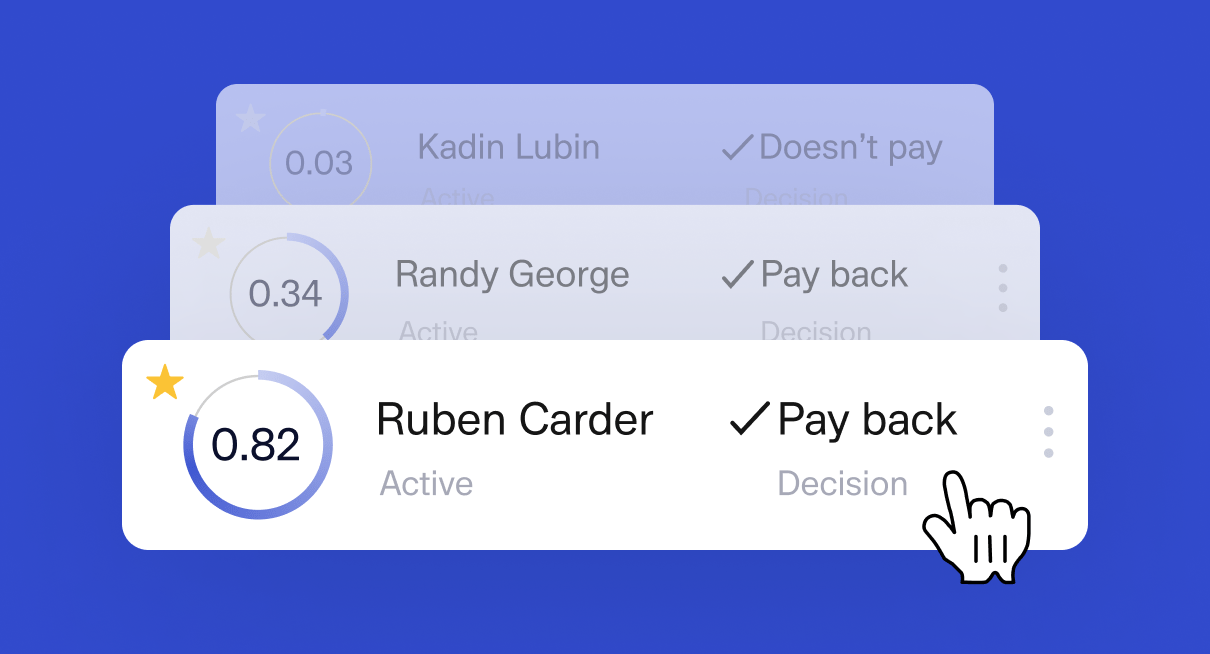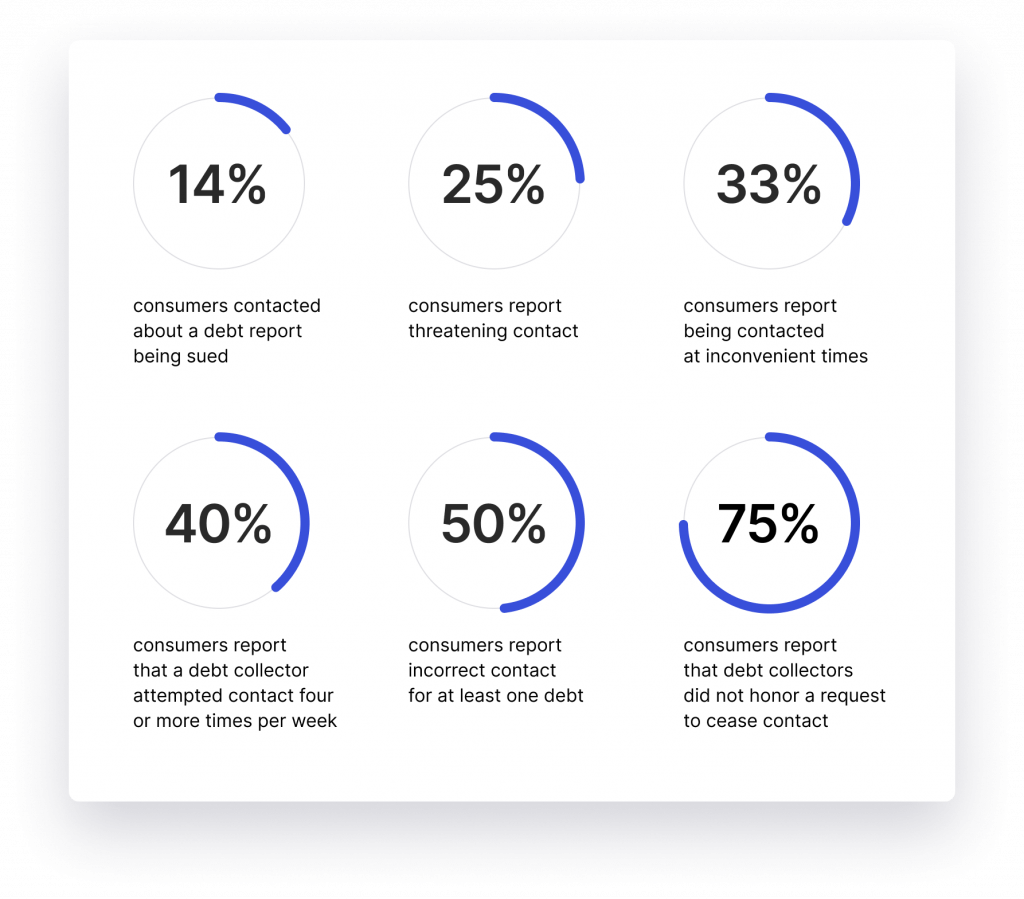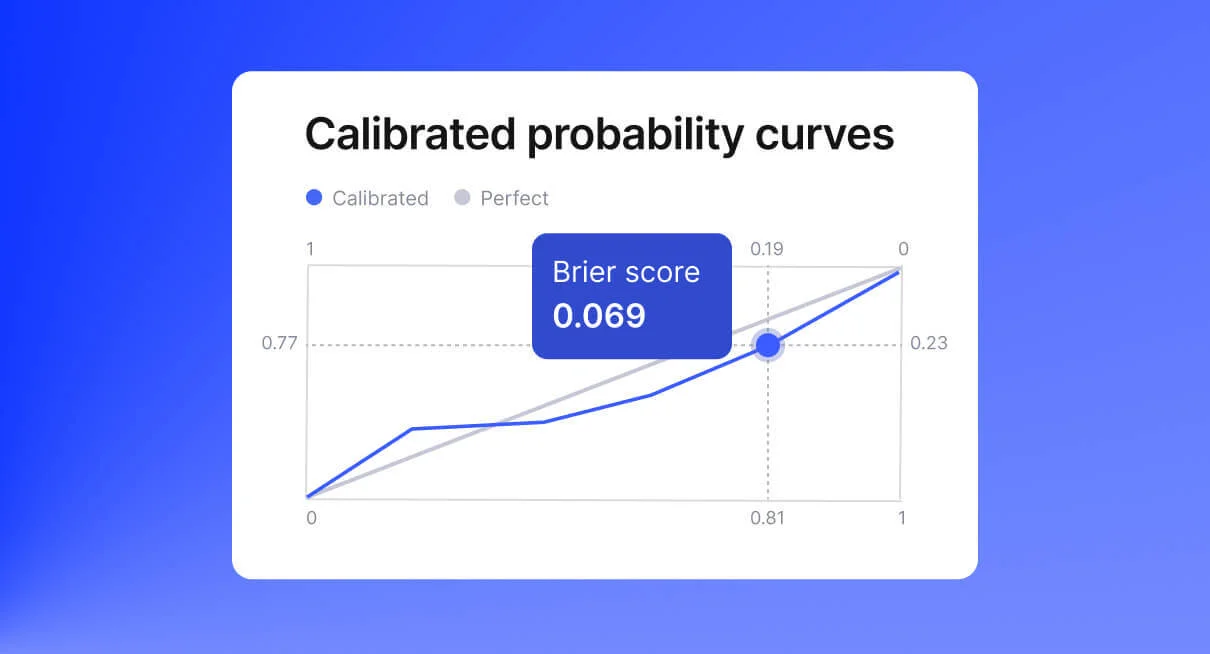
Debt is big business and business is booming. Between 2020 and 2021 consumer debt in the US increased by 5.4% from $14.53T to $15.31T, with mortgages and vehicle loans making up the majority of credits, showing that people are willing to borrow to fund their needs.
At the same time, it’s estimated that one in four (28%) borrowers have a debit in the collection (aka, the debt is being collected by a third party), indicating that not all borrowers are able to repay—and this is a problem for both the lender and the borrower.
Why is unpaid credit bad news?
For borrowers, unpaid debt leads to stress, as they struggle to make repayments and worry about the what-ifs. At the same time, it negatively affects their credit score and sets them up for more problems down the line.
On the lender’s side, this also creates a range of issues including:
Reduced profitability
Loans that are not paid are automatically a loss for a business. Firstly, they are out-of-pocket due to the money loaned, next they lose out of interest on this amount, thirdly there are paperwork costs in between, and finally, they may end up hiring a third party to recoup the debt, which reduces the risk of a fully unpaid loan, but is still costly to an organization.
Increased risk levels
Non-paid loans (NPLs) also increase the overall risk to an organization. As time goes on, it becomes less likely that a loan will be repaid. At the same time, a number of unpaid loans can indicate a wider problem in the loan approval process.
Reduced capital
Capital is what stands behind a business and supports its function, unpaid loans are a direct hit to these finances, and such loss needs to be accounted for and plans put in place to reduce its effect. Multiple unpaid loans can end up affecting the organization’s ability to lend at all and place it in an untenable condition.
Weakened reputation
When borrowers choose a provider to go with, they often look at a variety of factors, and this is where reputation comes into play. Poor reviews, a low loan repayment rate, and other negative factors may include consumers to choose another provider. At the same time, this may influence shareholders or investors to reconsider when deciding to invest in a particular lending provider in favor of a competitor.
Limited lending ability
High levels of NPLs can reduce a company’s ability to extend new loans or refinance old ones. This gives them a lot less operating capacity and reduces their ability for further financial growth. It is an untenable situation for a lender as it needs to be resolved quickly.
Legal issues
Lending providers are regulated bodies. This means they have a set of standards they need to adhere to. Poor debt collection practices, risky lending operations, and more have a risk of potential legal issues, including but not limited to fines, penalties, and restrictions in their operating practices.

How choosing the right practices can improve payback rates?
Avoiding these issues is always better than trying to solve them after they happen. However, even if mistakes have been made, it’s often not too late to correct them. On the flip side of the coin, there are numerous benefits to putting good practices and tools in place to reduce the risk. Here’s why choosing the right clients, tools, and practices matters.
Increase cost-effectiveness
Debt collection, no matter whether it’s done in-house or outsourced to an agency, is an expensive process in terms of both finances and resources. By stopping problems before they happen or nipping them in the bud early, your lending organization can optimize these costs and ensure long-term financial stability.
Maximizing recovery time
When a debt isn’t repaid, money is lost. However, this impact can be limited. Debt collection, if done right, can reduce the number of resources, money, and time poured into NLPs and ensure maximum recovery from any less-than-ideal situations.
Optimize resource efficiency
As we’ve said, debt collection is time-consuming, it’s resource intensive, and it is always negative for a lending provider. Depending on the circumstances and finances of your borrowers, there are always some debt collections that are more likely to be profitable than others. So that’s why when choosing between a rock and a hard place, having the right tools on hand can make a difference to your operational efficiency.
Reputation management
No reputable lending service wants to be known as a debt collection agency, but this could be your fate if inefficient practices continue. Instead, choosing smart tools ahead of time reduces the risk of predatory practices and the need to employ aggressive collection methods, ensuring business reputation remains a top priority.
No compliance woes
Many countries have compliance rules related specifically to how debt collection can be carried out, ensuring the onus remains on the provider, not the borrower. To make sure you stay in line with the latest compliance rules and deliver a top-level service, all while reducing risk, it’s vital to put the right tools and practices in place to improve debt collection.
What’s the solution to improving debt payback?
Let’s be clear, whenever a debt isn’t repaid, this isn’t good news. However, there are effective ways an organization can deal with debt repayments effectively to avoid further issues and improve repayment rates.
#1 Have the right practices in place at the beginning
Fail to prepare and prepare to fail is a saying that applies across all walks of life and debt collection is no exception. Having a distinct worst-case-scenario plan in place for debt collection is essential so that your organization has established procedures for what to do in almost every unpaid loan case.
Now, this may seem obvious, but surprisingly, many organizations only have a basic debt collection plan created, which doesn’t always fit all situations. Being able to maximize the debt repayment rate often requires flexibility and the need to have a plan that allows this.
#2 Don’t chalk it up to a loss right away
Yes, the client didn’t repay on time. Yes, this month is a loss. But that doesn’t mean the entire loan needs to be. Ensuring you have the right tools on hand now, means that if this happens, you can put your debt collection plan into action and work to ensure minimal losses to your business and maximum success on loan repayments.
#3 Get the right debt collection software on your side
We spoke a lot about the tools needed for debt repayment. Now it’s time to get into the details, what exactly does this mean? Collection scoring software, aka debt collection software, is a tool used by lenders to predict which clients are most likely to repay their debt. This helps reduce the risk of NLPs and increases the likelihood of future payments.
Collection scoring reduces NPLs
Debt collection software or collection scoring software is a piece of kit that helps lenders reduce the impact of unpaid loans by analyzing the identifying clients that are most likely to repay their loans given the right circumstances. It works in a number of ways, for example:
- Prioritizes cases—no matter how big your operations are, you will only have a limited amount of time, money, and resources to dedicate to any debt. By prioritizing them in order of most to least likely to be repaid, you increase the likeliness of payback. Collection scoring software does this by analyzing key parameters for a lender and giving an ordered list of borrowers to follow up with.
- Analyzes correlations—one of the biggest challenges of a debt collector is how to get in touch appropriately and quickly with your client. Debt collection software analyzes a variety of tools (SMS, calls, email, etc.) and metrics (age, location, workplace, etc.) to establish the best ways to get in touch and collect debts more efficiently.
- Calculates debtors and reserve rates—you only have a limited amount of funds in your reserve, allowing this to drain would be an unethical business practice. Instead, calculate debts, their collection, and their correlation to your reserve to ensure the most efficient collection practices. You can also explore changing interest rates and creating more loans, if it is appropriate to do, at this stage.
- Evaluates unlimited parameters—every lending business is different, and that’s why everyone needs an individualized approach to loan repayment. Debt collection software permits the analysis of a variety of metrics and parameters to establish the best repayment plans to improve debt collection.
Choosing good debt collection software
Currently, there are a number of very effective collection scoring tools on the market. However, our favorite has to be our own GiniMachine, a SaaS debt collection platform. It is a no-code tool that can be integrated into your current systems to evaluate debt and debt collection. Let’s take a look at some of its key features:
- No code predictive model—as we’ve said before, GiniMachine is a no-code tool that lets you easily integrate it with your current software. Its predictive software takes in a variety of factors and allows you to get collection scoring results in literally just a few clicks.
- Selectable cut-offs—every software needs limits, and we’ve included them with GiniMachine. With this tool, you can select the right values for your business, so the results are always tailored to your needs.
- Model monitoring functionality— the finance world is fast-paced, so we designed a model monitoring function to track your business models, case, and more and help you upgrade them when required.
- Visualize debt quickly—figures can be hard to grasp, especially if you are a multi-million business. That’s why GiniMachine comes equipped with the right data visualization tools to let you see the situation as it is instantly without hours of staring at graphs and charts.
- Truly personalized for you—GiniMachine’s models aren’t built based on Joe Blog’s clients. No. They’re only built to fit your needs. These models take into account your company, debt collection needs, and risk parameters to give results.
- Unlimited parameters to analyze—think debt comes down to a limited number of factors? Think again. GiniMachine allows you to analyze an almost unlimited number of parameters and business demands when it comes to debt repayment. This makes it a flexible and saleable solution that can be tailored to your needs.
Onboarding a better way to improve debt collection
Finding the right tools is step one. The next step is applying them to your business case. At GiniMachine, we’ve worked with all types of lending companies—big and small— to help them achieve a tailored debt collection solution that works for their needs.
Reach out to our team now to find the latest collection scoring software and get GiniMachine power for your lending business.



